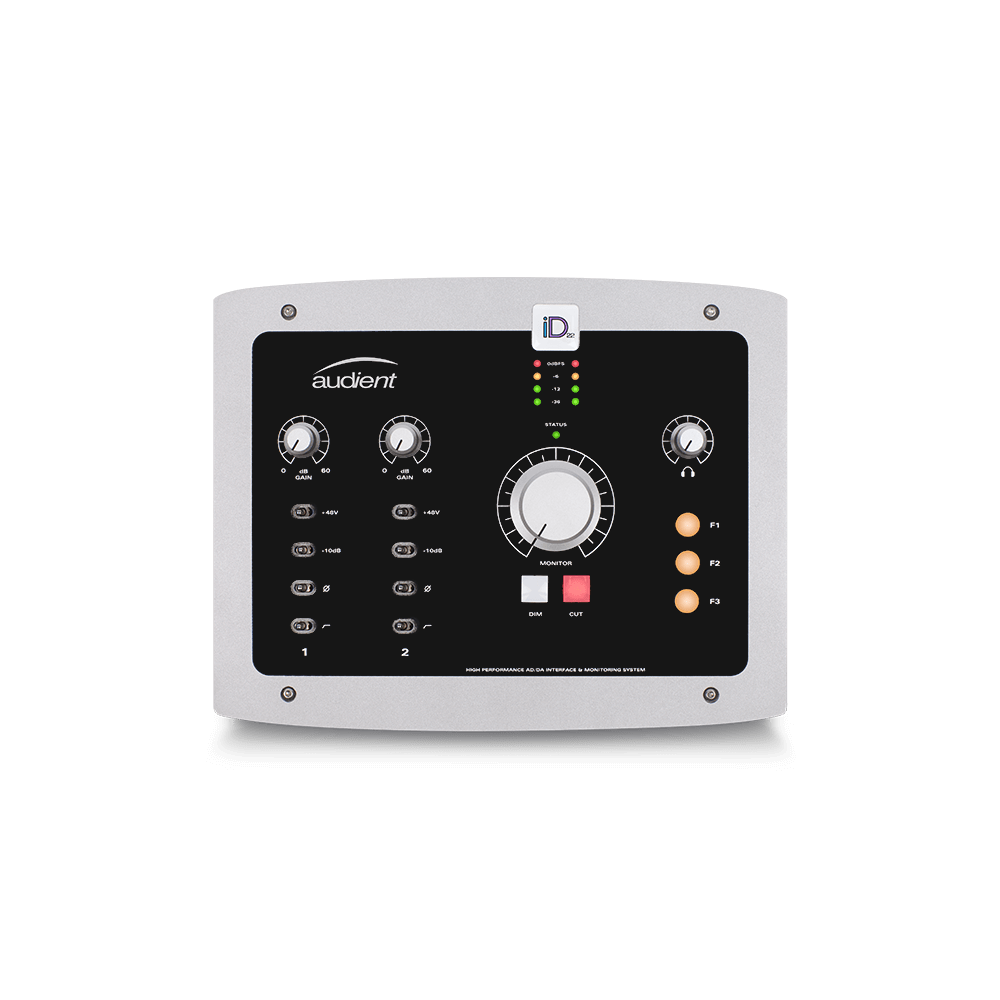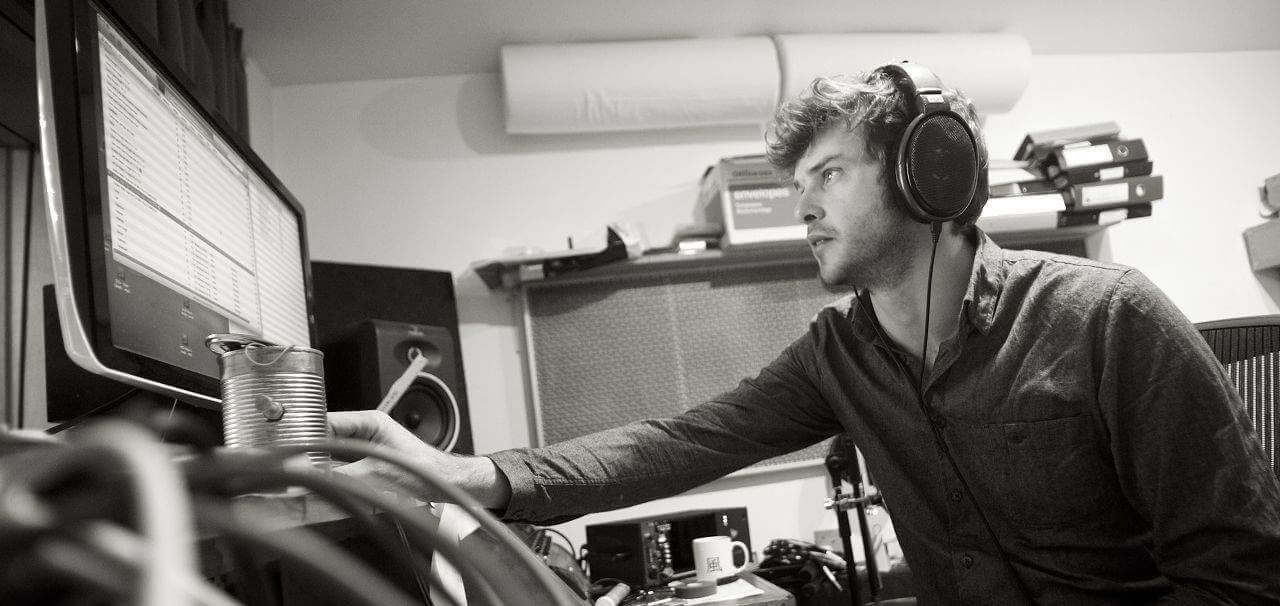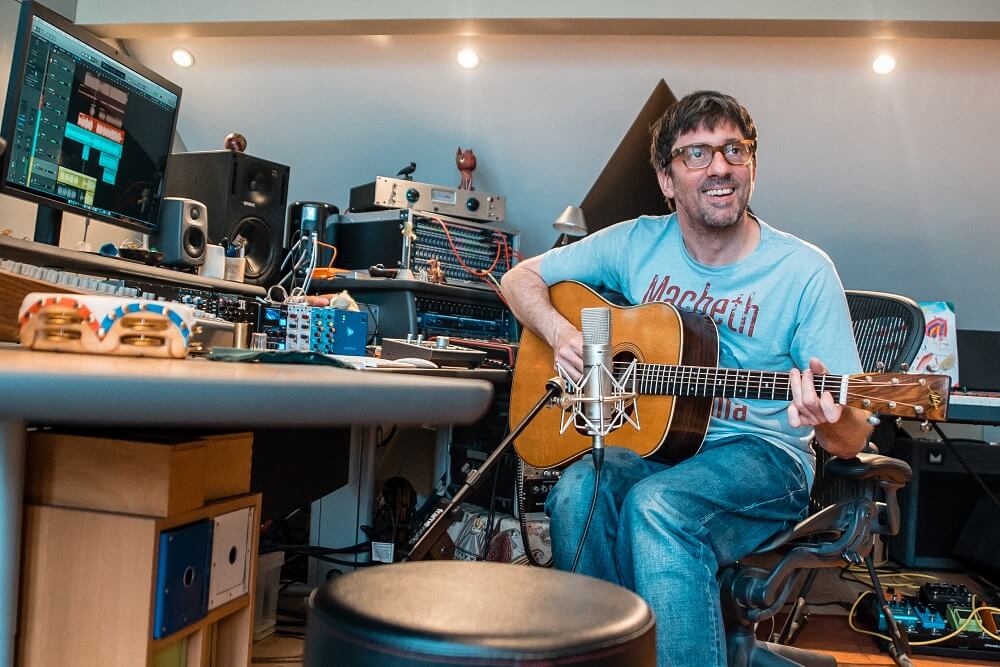Intro
As with all new product launches we often get asked ‘sounds great but what are the specs?” especially when it comes to the converters. With the announcement of our new high performance audio interface iD44, we decided we wanted to lift the lid on the process we go through when choosing converters for a new product. So here goes…
Firstly, what does a Converter do?
Firstly, What Does A Converter Do?
A converter changes a signal from one format to another and in our products you’ll find two kind of converters, an Analog to Digital Converter (ADC) and a Digital to Analog Converter (DAC).
The ADC’s are found on the inputs of the iD44 and change the continuously variable electrical signal which comes from your microphones, instruments.. etc and changes it into periodic samples which are represented in binary digits, which a computer can then store, transfer or modify.
When you playback audio from your computer, the opposite process needs to occur which is where the DAC comes into play.
This takes the discrete periodic samples and changes them back into a continuously variable electrical signal which can be played back through monitors or headphones.
Sounding a bit technical? Don’t let us lose your attention span just yet! Check out the simple diagram below:
Picture

Ok But What’s All This Noise About Noise?
Let us explain simply. Converters operate at high speeds, taking samples of the audio up to 96,000 times per second and with each sample being made up of up to 24 binary digits.
Due to this fast operation, a very high number of components are needed in very small place.
This fast operation and small size of the components needed requires incredibly accurate manufacturing processes to allow the converters to operate as expected, as any flaws will result in imperfections when converting the signal – such as added noise or distortions.
These advanced manufacturing processes require cutting edge technology, including highly sophisticated machinery, and are always being updated as the science behind it advances.
Therefore, converter manufacturers are always pushing the envelope to improve their converter’s specifications, providing clearer, more natural playback and like all new technology, every year new breakthroughs are made.
Something we keep a very close eye on during the R&D process!
So How Do We Decide?
These continuous advancements alongside the positive feedback received on the converters used in our award winning iD interface range we like to think we understand better than ever what our customers want from a converter.
With that in mind we began the most fun part of the journey – testing the converters we had selected.
Yeah but “what does that actually mean?!” I hear you cry, well let us explain.
Simply put it means we spent hours upon hours listening, analysing, testing and comparing converters. This falls into two main categories, the technical performance and the sound quality.
Sound Quality
We spent many a late night here at Audient HQ performing measurements on testing equipment, listening to a wide variety of music through each converter, testing in different environments and listening on different monitors.
We repeat this process as many times as necessary until we narrow down our choices and pick the all round best sounding and best performing converters available to us.
Technical Performance
Although we have to use our ears as engineers we also pay close attention to each converters technical performance. To do this we base our measurements around three main specifications, which all greatly affect the performance and everyday sound of an audio interface.
Total Harmonic Distortion (+ Noise)
The amount of additional harmonic overtones introduced by the conversion process. Often expressed as a percentage and you would want this to be as low as possible.
Dynamic Range
The difference between the highest and lowest signal level and expressed in decibels. The larger the dynamic range, the more natural sounding the playback.
Frequency Response
How much a signal level is attenuated or increased based on its frequency content. The deviation value is expressed as a plus or minus decibel figure (+/- dB) across a given frequency range.
We measure between 10Hz up to half the sample rate (the nyquist frequency), which more than covers the human range of hearing. A very low deviation figure between this range is what we would like to see.
Based on this process, we were able to finally decide the ADC’s and the DACs that we wished to use on the iD44 and Dual Converter technology (DCT) was born.
Dual Converter Technology
Dual Converter Technology
So what is DCT? We decided that rather than using the same manufacturer for the ADC’s and the DAC’s we would use two different manufacturers of converters, one for the ADC and one for the DAC, something we like to call Dual Converter Technology.
A large number of manufacturers will use the same converter manufacturer for both the ADC and DAC’s or even a single combined ADC/DAC (often known as a CODEC) as this makes for easier development and manufacture.
That’s not to say this kind of design will give bad audio quality by any means. This is the method we used in our iD22, iD14 and iD4 and we’re extremely happy with the way they sound.
However, Dual Converter Technology allows us to get both our inputs and outputs operating at extremely high specifications without any compromise, pushing our audio quality to new heights.
No matter if you are tracking, mixing or mastering with the iD44, you will always get pristine, natural sounding audio. However, we wanted to push the iD44 even further and to do this we implemented Parallel Analog to Digital Conversion.
Parallel ADC’s
Parallel ADC’s
In the iD44, we have used a technique called Channel Summation to allow for lower noise and an increased dynamic range.
In basic terms, for each input, we use two converters, sum the two outputs together and then average out the data from the two ADC’s.
You may want to take a deep breath at this point as things are going to get a little mathematical…
As the two ADC’s are receiving identical inputs, when the two outputs are summed together the signal power will increase by a factor of 2, or simply be doubled as you would probably expect.
However the noise added during the conversion stage will be random in nature (as noise tends to be) and the noise outputs of the convertor will therefore be dissimilar from each other at the point of summing.
Because the noise signals aren’t alike, when the signals are summed together you don’t get a magnitude increase of x 2. Instead, an increase of 1.414 is seen due to a mathematical concept known as a Root Sum Square.
As the signal power increases by 2 but the noise floor only effectively increases by 1.414, an increase in signal noise to noise ratio is seen, which in turn, increases the dynamic range of the ADC.
This is shown in the massively exaggerated diagram below:
Picture 2

Summary
This together with our Dual Converter Technology allows us to get the best sounding and the best specs we’ve ever achieved:
ADC:
THD+N @ -1dBFS (1kHz): <0.0008% (-103dB)
DYNAMIC RANGE: 121dB A-weighted
FREQUENCY RESPONSE: +/-0.5dB 10Hz to Fs/2
CROSSTALK: -115dBu @ 1kHz & 10kHz
DAC:
THD+N @ -1dBFS (1kHz): <0.0006% (-104dB)
DYNAMIC RANGE: 126dB A-weighted
FREQUENCY RESPONSE: +/-0.5dB 10Hz to Fs/2
CROSSTALK: -118dBu @ 1kHz & 10kHz
Our Products
-

Interfaz de audio 2 entradas | 2 salidas
-

10in | 14out Audio Interface
-

Interfaz de audio 10 entradas | 6 salidas
-

Interfaz de audio 20 entradas | 24 salidas
-

Interfaz de audio 10 entradas | 14 salidas
-

Interfaz de audio 2 entradas | 2 salidas
-

Interfaz de audio 4 entradas | 4 salidas
-

Todo lo que necesitas para empezar a grabar
-

Interfaz de audio 10 entradas | 4 salidas
-

Previo de micro y ADC de 8 canales
-

Previo de micro y control de tono de 8 canales
-

Consola de grabación analógica modular
-

Small Format Analogue Recording Console
-

Small Format Analogue Recording Console
-

Immersive Audio Interface and Monitor Controller
-

Controlador de sobremesa para monitores
-

Controlador de monitores de sonido surround



